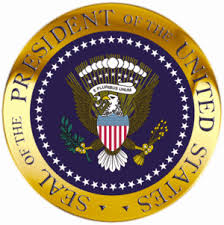Donald Trump’s improbable victory in early November’s presidential election caught many people by surprise. A Hillary Clinton victory looked almost certain if you believed most election polls and media outlets in the days leading up to the election, but as Tuesday night progressed a different story emerged. As a Donald Trump presidency became more likely, a brief overnight market panic quickly materialized sending markets and market futures in the US and overseas down sharply. Markets swiftly reversed course however, and a 5% loss in S&P 500 futures turned into a gain of more than 1% by day’s end.
We are still finding out more about Donald Trump’s presidential agenda with each passing day, but so far, financial markets have reacted positively. In fact, the Dow Jones Industrial Average and S&P 500 market indices in the US have reached record highs recently. The coming weeks will likely reveal new information about the Trump presidency. For now, here are some of the likely plans (and their potential impact) president Trump is likely to introduce in the coming months.
Entitlement Programs
Neither candidate spent a lot of time during the campaign talking about major entitlement programs. Trump did discuss the federal budget significantly while on the campaign trail, but his tone leaned towards protecting entitlement programs like Social Security and Medicare in any of those discussions.
That is good news for beneficiaries of these programs in the short-term, but the long-term financial stability issues with these programs has been well documented here and in countless other sources. It would appear that the next two years might be the best opportunity for some meaningful reform to strengthen the long-term prospects for both programs with Republicans majorities in the House and Senate and control of the Oval Office.
Tax Reform
Aside from the personal character of each candidate, no issue was debated and discussed more often than taxation during the campaign season. Donald Trump’s campaign tax plan primarily focused on a few provisions. One initiative will be to simplify the number of tax brackets from seven to three, along with their tax rates on the personal income tax side. He also proposed reducing the corporate income tax from 35% to 15%.
Over time, Trump’s tax plan has moved closer to the plan proposed by House Republicans, so it is increasingly likely that significant tax reform could tax place. There is also likely to be changes to capital gains taxes as well, although there has been some divergence in Trump’s and the House Republican plan. While there is likely to be some debate and compromise, expect significant changes to occur which could complicate tax planning in the near-term.
Healthcare Reform
As the campaign reached the November fever pitch, Trump vowed to repeal the Affordable Care Act. Moreover, since the election, Mr. Trump has reinforced his intention to repeal and replace the Affordable Care Act (ACA), although the threat of a Democrat-led filibuster in the Senate looms.
Nobody seems to know with great certainty what a replacement plan might look like, at the moment. However, one of the taxes implemented to support the ACA is very likely to be disposed of: the 3.8% surtax on net investment income. Both Trump and House Republicans have targeted the tax in their proposals.
Federal Reserve
Donald Trump levied a fair amount of criticism against Federal Reserve Chairwoman Janet Yellen on the campaign trail. Among the criticisms was an accusation that the Fed has kept interest rates low in response to political pressure. Because of this criticism, Trump may want to make some changes at the Federal Reserve.
The market has been anticipating a rate hike in December, and bond markets have been pricing the rate hike, along with expected inflation into bond yields. In the short amount of time since the election, we have seen yields increase on bonds, while the price of existing bonds has fallen. (This is one reason why we have kept our clients’ bond portfolios so short; shorter-term maturity bonds are impacted less than longer-term maturity bonds).
Once Trump makes his Federal Reserve changes, and if inflation picks up as expected with some of Trump’s intended infrastructure spending, we would expect to see more rapid interest rate increases in the coming months.
DOL Fiduciary Rule
Trump has been a proponent of less government regulation throughout the campaign, but it is unclear if the Department of Labor Fiduciary Rule is on his radar for repeal prior to its April 2017 implementation date. It may not matter whether the Fiduciary Rule is implemented or not, however, as the issue has already raised awareness of the difference in standards of care by financial advisors. Consumers are now better able to make an informed decision about the type of financial advisor they hire.
As with any change in political leadership, there will be unforeseen developments that impact our ability to plan for the financial and economic conditions that will arise. As new information and developments emerge, we will be sure to keep you informed of their impact to your financial well-being.
In the meantime, contact our office at 419-878-3934 to make sure you have taken advantage of every investment opportunity and tax advantage that may expire by year-end.

